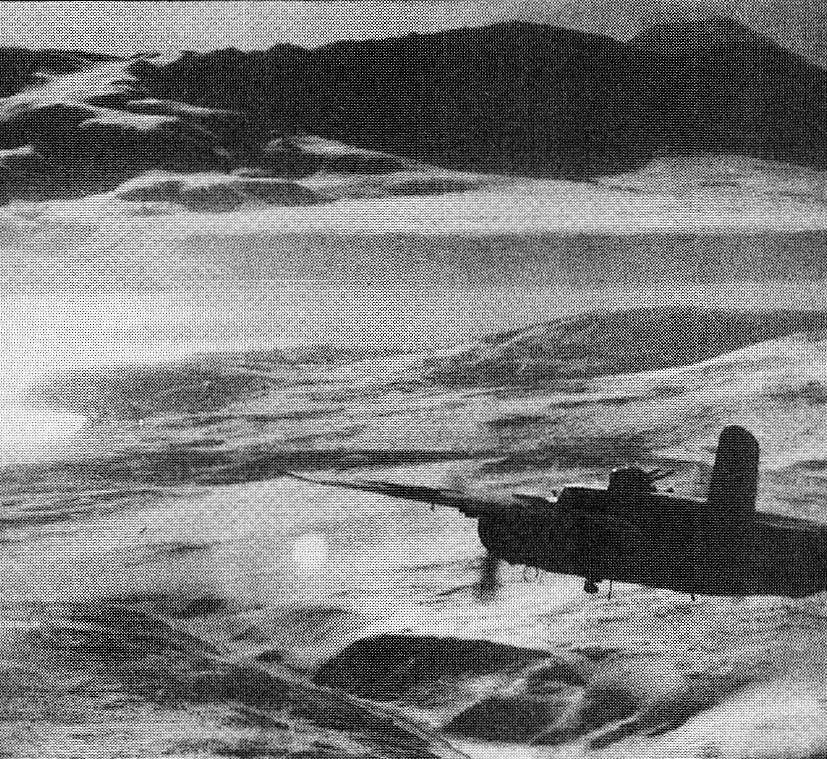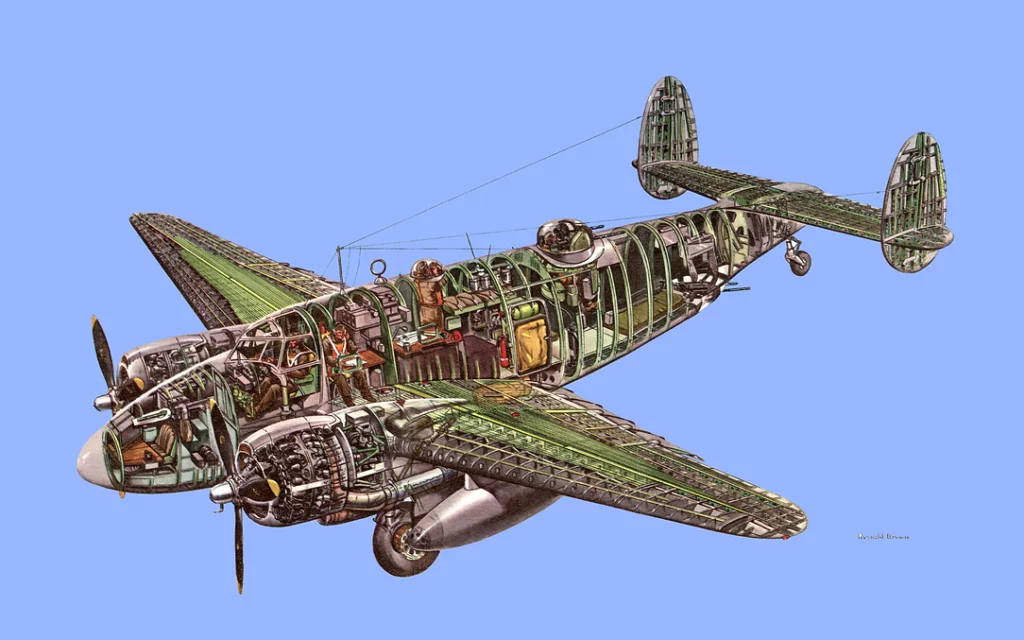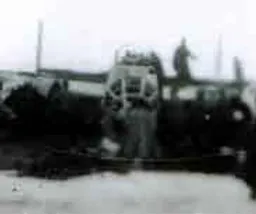USAAF missions
10 Jul 1943 (Sat): The Eleventh Air Force launched the first land base bomber attack against the Japanese homeland. Eight B-25s raided military installations in the northern Kuriles dropping bombs on the southern part of Shimushu Island and the northern part of Paramushiru Island in a dead reckoning bomb run when clouds obscured the target and prevented a low-level altitude attack. No anti-aircraft fire or fighters were encountered. The B-25 crews staged from the Alexia airfield on Attu Island. Six B-24Ds originally scheduled to participate in the attack were diverted when word was received that Japanese ships were nearby. Five other B-25 crews on shipping alert were also dispatched. (Carter and Mueller, Combat Chronology, p. 156.)
Six B-24 are led by Maj. Robert “Pappy” Speer of the 36 th B.S. in B-24 0090 “Mush”. They attempted to bomb Kataoka Naval Base on Shimushu Island. A heavy cloud front existing from the sea’s surface to 6,000′ just north of the island chain prevents the attack. This was the first attempt to bomb Japan by heavy bombers in World War II. A five B-25 shipping sweep was also unsuccessful.
(Kevin Don Hutchison, World War II in the North Pacific, p.107)
Next American raid to the Kuriles July 19, 1943 was made by six B-24s and four PBYs. The PBYs were prevented from attack due to high overcast. The B-24s led by Maj. Robert Speer at 6:20 a.m. managed to drop bombs on Japanese ships stationed at Kataoka Naval base on Shimushu, and Kashiwabara airfield on Paramushiro. However, the bombs again missed their targets. At 6:30 the Japanese blared air raid alarm. 10 float fighters Nakajima A6M2-N attempted to intercept, but missed the enemy. During that raid, the crews of B-24 bombers also photographed the Japanese military installations and ships of the 5th Fleet, stationed in the Kuril Islands, which allowed to estimate the actual strength of the Japanese forces.15,000 pounds of bombs were dropped and 200 photographs for intelligence gained. Americans suffer no casualties or damage. The first heavy bomber attack on Japan was accomplished.
11 August 1943 the 11th Air Force undertook its first successful designated bombing mission against the Japanese homeland, vs. “reconnaissance in force” of 19 July.
Nine B-24s attacked Kataoka Naval base, shipping and Kashiwabara staging Area on Paramushiru. Two B-24s failed to return. 2nd Lt. James R. Pottenger’s crew becomes the first Kurile theatre Russian internees after crash-landing on the Kamchatka peninsula. Japanese reported that the airfield living quarter was destroyed and 33 personnel were killed.
The Liberators from Attu dropped 72 500 lb. bombs and 25 incendiary clusters (132 lb. each), totaling 39,300 pounds, on Paramushiro and Shimushu targets, as indicated:
Kataoka Naval base, Shimushu- 27x 500 lb. bombs and ten clusters
Army Staging Area, Kashiwabara, Paramushiro- 45x 500 lb. bombs and 15 clusters
Good hits observed on both targets.
Intense, inaccurate AA fire was received mostly from ships in Paramushiro and Higashibanjo Straits. Estimated 40 enemy fighters, mostly land- based planes, Zekes, Rufes and Oscars took off after first bombs were dropped and pursued mission. Five enemy fighters were definitely shot down. Two B-24s, No. 0129, Capt. Hoffman, and No. 0309, SLT Pottenger and crews failed to return. Weather over target clear except Paramushiro and Shimushu covered with low hanging clouds. Targets opened up and bomb run began. One plane returned with one engine shot out. One missing plane was known to have one more shot out. Two planes returned with minor battle damage. Mission took off from Attu at 0655, and seven planes landed at Attu 1700. (War Diaries, Comnorpac, August 1943)
No Japanese air patrol was flown that morning due to the landing strip repair at Kitanodai. At 0710 anti-aircraft surveillance has discovered nine four-engine aircraft, initially reported as B-17s, east of Paramushiro Strait at 5000 to 6000 m altitude, and immediately notified the base. All Ki-43 fighters were taken to the air.
Gradually lowering their altitude, the B-24s one by one released their bombs over the targets on both sides of Paramushiro Strait, Kataoka naval base on Shimushu and Kashiwabara Army staging area on Paramushiro. Despite the delayed take-off and difficulties in finding the enemy planes now flying at low altitude, Japanese fighters led by 54th Sentai CO Major Yasunari Shimada, succeeded in chasing the attackers. Three bombers were reported shot down, another two-as a probable. Ki-43 piloted by 1st Lt Isao Iwase of the 3rd Chutai was damaged in the battle. Iwase himself was hit in the chest and died during crash- landing. He was credited a victory over one B-24. Warrant Officer Yamada Sei’ichi and Sergeant Enokida Shoochi were credited with the cooperative kill of another B-24.
Zero fighters of the 281st Kokutai stationed at Musashi airfield on the southern tip of Paramushiru, did not participate in this battle. However, stand-by pilots immediately took off to protect their base at Kurabu Zaki, and a flight was sent to the north of the island to assess the situation. By the time the Zeros arrived, enemy planes were gone.
US: claimed eight Japanese planes shot down, one more as probable and two as possible.
Japan: 54th Sentai claimed five B-24s shot down and two more as probables. One Ki-43 piloted by Lieutenant Isao Iwase of 54th Sentai was lost. 452nd Kokutai claimed damage to four B-24s for the price of three damaged A6M2-N.
452nd Ku account:
0715: Ten A6M2-N float fighters of 452nd Kokutai led by Capt. Shunshi Araki took off from Lake Bettobi and encountered formation of four B-24s. The bombers were attacked and received significant damage. Nevertheless, none were shot down. Three A6M2-N fighters piloted by PO1C Misao Osa, PO1c Seizou Hoshi, and PO2C Teruyuki Tadanaka received damage from the bombers defensive fire.
0745: all planes returned to base.
Eight Mitsubishi F1M aircraft also were scrambled into air but did not participate in the battle.
Account of Warrant Officer Yamada Sei’ichi, the 54th Sentai:
Yamada, who had 5-years flight experience in Type 97 Army Fighter (Ki-27 “Nate”), took off the last, because his Ki-43 was undergoing repair of one of the machine guns, which remained unusable during the battle. After the takeoff, Yamada headed to the East, toward the Aleutians in which direction the Americans would return home after bombing.
He sighted a small dot and recognized it was a B-24 flying alone.
Yamada closed to 800 meters from the right-lower side of the bomber. His speed was around 300km and the altitude was 3,000 meters. He passed over the bomber and made a 2,000 meter U-turn, now flying his Ki-43 head-on toward the B-24.
The bomber was approaching very quickly, and Yamada slowed down to about 240 km/h.
He took aim at the wing root of the plane from a distance of about 300 meters. Yamada pulled the trigger and fired seven or eight bullets. He saw a tremendous gasoline leak from the wing root turning into a trailing stream of gas. Surprisingly, the B-24 machine guns remained silent, making it look like the Americans were afraid to catch their plane on fire.
The Liberator turned left toward Kamchatka. It was gradually lowering the altitude, and Yamada followed the B-24 for another several minutes. All of a sudden, another Oscar (piloted by Sergeant Enokida Shoochi, 榎田軍曹) rapidly passed over Yamada’s fighter, and opened fire on the B-24 from the side of the plane.
The bomber continued gradual descend for another 3-4 minutes and then exploded in the air.
Yamada saw four parachutes coming from the exploding B-24 down toward the water.
B-24D, 42-40129, pilot Harrell Hoffman and crew, was attacked by two Ki-43s and shot down.
B-24D, 42-40309, pilot J. R. Pottenger, lost one engine during the bomb run, and dropped behind the formation. The supercharger of another engine was on fire. Up to eleven Japanese fighters attacked and pursued the crippled bomber for nearly one hour, until waist gunner Thomas Ring shot one of them down. Soon after, the second engine was lost. Pottenger crash-landed his bomber in a swamp near Petropavlovsk. During the landing, Donald Dimel, Richard Varney, Robert Wiles and Thomas Ring sustained injuries from a loose machine gun, torn from its waist mount. Dimel underwent urgent splenectomy in Petropavlovsk and recovered. Ring was placed in traction apparatus to align his broken pelvis, but died on 1 September of a blood clot . The crew was flown to Tashkent via Khabarovsk, Vladivostok, and Magadan on 5 September 1943.
They were secretly released to the USA via Iran 18 February 1944.
23 Jan 1945 (Tue) KIA: A B-24 crew from the 404th Bombardment Squadron flew a photo-reconnaissance mission along the coast of Onekotan and Kakumabetsu Islands while three other crews led by 1/Lt. Corbin Terry dropped 2,000 pounds of bombs on the cannery at Kakumabetsu, Paramushiru Island and took photographs. The flight encountered determined Japanese fighter opposition, predominately Zeros with some “Oscars” and “Tojos.” The B-24 gunners claimed three fighters shot down, one probably destroyed and one damaged. A Japanese pilot in a silver colored fighter downed the B-24D, 42-41152, flown by 2/Lt. Charles N. Talbot Jr. Crew members from the other B-24 observed Lieutenant Talbot’s right engine catch fire and flames coming out of the bomb bay and waist window as the stricken bomber left the formation in an apparent attempt to reach Cape Lopatka. It went into a spin and an explosion tore off the left wing and parts of the doomed bomber spun down into the waters separating Shimushu Island from the Kamchatka Peninsula. Three parachutes were observed with Japanese fighters circling them as they floated down into the icy waters of the straits below. The other bomber crews could not determined if the Japanese were strafing the helpless men. (Mission Report, 28th Bombardment Group, subj: Operational Summary for 23 January 1945, 24 Jan 1945.)
B-24D 42-41152 flown by Lt. Charles N. Talbot (left arrow) falling out of formation and being attacked by a Japanese fighter (right arrow). Talbot was probably trying to make it to the USSR but an explosion tore off the bomber’s left wing and it went down in the sea.
Standing (L to R): Sgt Solomon Pollack, 2nd Lt Verdie E. Smith, 2nd Lt Herman A. Welch, 2nd Lt Kenneth E. Young, 2nd Lt Charles N. Talbot, Jr., Sgt Edward F. Smith.
Kneeling (L to R): Sgt James E. Neal, Sgt Anthony P. Bedell, Sgt Jackson E. Brown, Sgt Thomas A. Moffitt & Sparks (the crew’s dog), Sgt Rodney R. Schubring, Sgt Cloyd R. Kunkel.
All the men in this photo were killed in action on 23 Jan 1945 except for Edward Smith and Thomas Moffit
Also please refer to a blog page discussing the details of the 1/23/45 mission.
19 May 1945
Eight Mitchells were attacked by six Oscars during the raid to Minami Zaki on Shimushu. One Oscar claimed as damaged. B-25J 43-36152, 77 B.S., John Daugherty and crew was shot down by the AA fire. B-25 43-36140, 77 B.S., SLT Raymond B Lewis turned to base with bombs, but did not return. The last contact with him was made 30 min after leaving the target. (War Diaries)
Right propeller of Lewis’ bomber was shot off by the fighters, and the B-25 crash-landed on Shimushu shore, ripping off its entire belly. The crew got out without major injury and was taken POW by the Japanese. Lt. Lewis, Lt. Burrows and radioman Corporal William Bradley were in transit aboard Japanese freighter, on the way from Shimushu to Hokkaido, when their ship was sunk by the U. S. submarine. Navigator-bombardier Lt. Milt Zack, engineer Corporal Robert Trant, and tail gunner Walter Bailey survived the war in POW camp
23 Jan 1945 (Tue) KIA: A B-24 crew from the 404th Bombardment Squadron flew a photo-reconnaissance mission along the coast of Onekotan and Kakumabetsu Islands while three other crews led by 1/Lt. Corbin Terry dropped 2,000 pounds of bombs on the cannery at Kakumabetsu, Paramushiru Island and took photographs. The flight encountered determined Japanese fighter opposition, predominately Zeros with some “Oscars” and “Tojos.” The B-24 gunners claimed three fighters shot down, one probably destroyed and one damaged. A Japanese pilot in a silver colored fighter downed the B-24D, 42-41152, flown by 2/Lt. Charles N. Talbot Jr. Crew members from the other B-24 observed Lieutenant Talbot’s right engine catch fire and flames coming out of the bomb bay and waist window as the stricken bomber left the formation in an apparent attempt to reach Cape Lopatka. It went into a spin and an explosion tore off the left wing and parts of the doomed bomber spun down into the waters separating Shimushu Island from the Kamchatka Peninsula. Three parachutes were observed with Japanese fighters circling them as they floated down into the icy waters of the straits below. The other bomber crews could not determined if the Japanese were strafing the helpless men. (Mission Report, 28th Bombardment Group, subj: Operational Summary for 23 January 1945, 24 Jan 1945.)
Standing (L to R): Sgt Solomon Pollack, 2nd Lt Verdie E. Smith, 2nd Lt Herman A. Welch, 2nd Lt Kenneth E. Young, 2nd Lt Charles N. Talbot, Jr., Sgt Edward F. Smith.
Kneeling (L to R): Sgt James E. Neal, Sgt Anthony P. Bedell, Sgt Jackson E. Brown, Sgt Thomas A. Moffitt & Sparks (the crew’s dog), Sgt Rodney R. Schubring, Sgt Cloyd R. Kunkel.
All the men in this photo were killed in action on 23 Jan 1945 except for Edward Smith and Thomas Moffit
Also please refer to a blog page discussing the details of the 1/23/45 mission.
19 May 1945
Eight Mitchells were attacked by six Oscars during the raid to Minami Zaki on Shimushu. One Oscar claimed as damaged. B-25J 43-36152, 77 B.S., John Daugherty and crew was shot down by the AA fire. B-25 43-36140, 77 B.S., SLT Raymond B Lewis turned to base with bombs, but did not return. The last contact with him was made 30 min after leaving the target. (War Diaries)
Right propeller of Lewis’ bomber was shot off by the fighters, and the B-25 crash-landed on Shimushu shore, ripping off its entire belly. The crew got out without major injury and was taken POW by the Japanese. Lt. Lewis, Lt. Burrows and radioman Corporal William Bradley were in transit aboard Japanese freighter, on the way from Shimushu to Hokkaido, when their ship was sunk by the U. S. submarine. Navigator-bombardier Lt. Milt Zack, engineer Corporal Robert Trant, and tail gunner Walter Bailey survived the war in POW
B-25J 43-3614, Lt. Harold Beever and crew, landed in Petropavlovsk after being badly hit by the fighters. The 54 Sentai record states the interception was undertaken by four Ki-43s. Four bombers (reported as being PV-2s) claimed shot down and two more damaged.
16-17 June 1945 B-24M 44-50345, 404 B.S., Lt. Richard S Brevik, scored direct hit on Japanese vessel (cargo ship Kongo Maru?) north of Shimushu Island, but was damaged by resulting explosion, went out of control and crashed in the water. Tail gunner, Corporal William T. Cavanaugh survived the crash and managed to heave himself in the life raft. He then helped into the raft his seriously wounded pilot Lt. Brevik, who died overnight. On the third day Japanese destroyer picked up Cavanaugh and Brevik’s body and delivered them to Kataoka. Brevik was soon buried in the vicinity of the base, and Cavanaugh was taken POW, surviving the war.




















